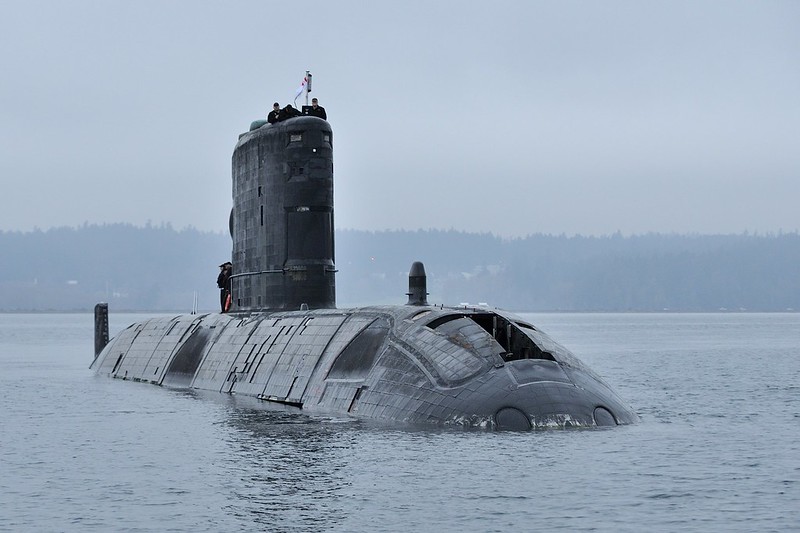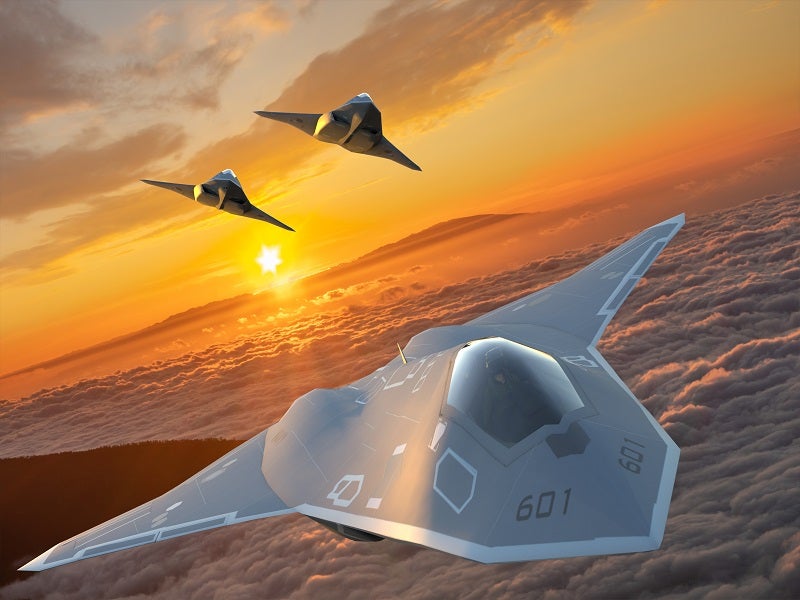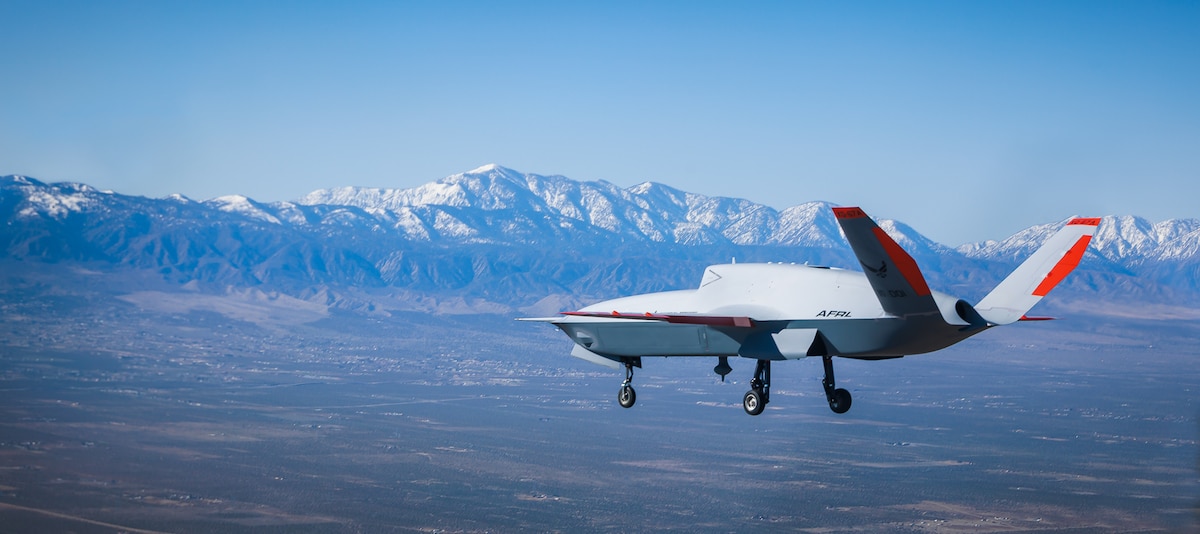N & S America
SOURCE: Anduril Industries

Today, the United States Air Force announced that Anduril has been selected as one of two vendors to move forward on the Collaborative Combat Aircraft (CCA) program. Over the next phase, Anduril will design, manufacture, and test production-representative CCAs.
“There is no time to waste on business as usual. With the CCA program, Secretary Kendall and the Air Force have embraced a fast-moving, forward-looking approach to field autonomous systems at speed and scale,” said Brian Schimpf, CEO and Co-Founder. “We are honored to be selected for this unprecedented opportunity, which signals a demand for continued expansion of the defense industrial base. Anduril is proud to pave the way for other non-traditional defense companies to compete and deliver on large scale programs.”
Continue readingSOURCE: AFI

On April 12, 2024, a mishap involving a USAF F-22 stealth fighter jet was reported by the Okinawa Defense Bureau. The incident occurred at a base on the Japanese island of Okinawa.
According to reports, the F-22 encountered a landing gear issue while it was being towed. The exact nature of the problem and the cause are not yet known.
Continue readingSOURCE: REUTERS

Canada’s domestic spy agency concluded that China interfered in the last two elections, an official probe heard on Monday, the firmest evidence so far of suspected Chinese meddling in Canadian politics.
Prime Minister Justin Trudeau’s Liberal Party won both the elections, held in 2019 and 2021. Under pressure from opposition legislators unhappy about media reports on China’s possible role, Trudeau set up a commission into foreign interference.
The commission was shown a slide on Monday containing an extract of a February 2023 briefing from the Canadian Security Intelligence Service (CSIS).
Continue readingSOURCE: Northrop Grumman

Northrop Grumman Corporation completed assembly of a full-size uncrewed underwater vehicle (UUV) prototype known as Manta Ray. A new class of UUV, it is an extra-large glider that will operate long-duration, long-range and payload-capable undersea missions without need for on-site human logistics.
Manta Ray was built through a Defense Advanced Research Projects Agency (DARPA) program aimed at advancing key technologies to benefit future UUV designs, including techniques to manage energy, increased payload capacity, low-power propulsion and more.
Continue readingSOURCE: AP

Prime Minister Justin Trudeau says Canada is exploring the possibility of joining the second phase of AUKUS, a U.S.-led alliance with the United Kingdom and Australia.
The initial pillar of the alliance, forged in 2021, was focused on developing nuclear-powered submarines for Australia. Trudeau says Canada will consider whether it needs to purchase nuclear-powered submarines to better ensure it can defend Canadian sovereignty in the Arctic.
Continue readingSOURCE: AFI

A recent sighting of an F-117 Nighthawk flying low over California in March 2024 has taken the internet by storm. Social media platform [X] exploded with comments praising the jet’s unique design, with some claiming it still looks futuristic even “50 years down the line.”
While the Lockheed F-117 Nighthawk was officially retired from active service by the U.S. Air Force in 2008, this legendary aircraft is far from gone. As we’ve been reporting for years, the Nighthawk continues to fly for a variety of purposes.
Continue readingSOURCE: Lockheed Martin Corporation.

The USS Preble (DDG 88) successfully completed Flight Test Aegis Weapon System-32 (FTM-32), using the Aegis Combat System to successfully intercept a Medium Range Ballistic Missile (MRBM) target using SM-6 Dual II Software Upgrade.
Supported by the Missile Defense Agency, United States Navy, and Lockheed Martin, FTM-32 tested a real-world scenario, and the results of these flight tests continue to prove the versatility and strength of the Aegis Combat System.
Continue readingSOURCE: AFI

Brazil reached a historic milestone today as the Tonelero, the third Scorpène® submarine of the ProSub program, was launched at the Itaguaí Naval base amidst the distinguished presence of both Brazilian and French Presidents. This event not only marks a significant advancement in Brazil’s naval capabilities but also underscores the successful collaboration between Brazil’s ICN and France’s Naval Group, showcasing the nation’s growing prowess in submarine construction.
The Tonelero stands as a testament to Brazil’s emergence as a key player in submarine manufacturing, having been built entirely in Brazil by ICN through a successful Transfer of Technology (ToT) partnership with Naval Group. Former Brazilian President Lula da Silva aptly remarked during the event, “Today Brazil is part of a small group of countries that master submarine construction. ProSub is Brazil’s largest and most important international defense cooperation project.” This achievement highlights Brazil’s dedication to developing its indigenous defense capabilities and solidifying its position as a leader in naval innovation.
Continue readingSOURCE: ANI

In a major allegation amid the ongoing investigation into the Crocus City Hall attack, Russia’s Federal Security Service (FSB) chief Alexander Bortnikov said on Tuesday that the United States, the United Kingdom and Ukraine are behind the terrorist attack, TASS reported.
“We believe that this is true. In any case, we are now talking about the factual information we have. This is general information, but they have a long record of this sort,” he said after participating in an enlarged meeting of the Prosecutor General’s Office board, when asked whether the US, Britain and Ukraine were behind the terrorist attack.
Continue readingSOURCE: AFI

The skies are about to get a whole lot more high-tech. The United States Air Force (USAF) is developing the Next Generation Air Dominance (NGAD) fighter jet, a sixth-generation marvel designed to replace the legendary F-22 Raptor in the 2030s.
The NGAD program is ambitious, aiming to deliver a “family of systems” that goes beyond just a single aircraft. This family is expected to include a crewed fighter jet, the centerpiece, alongside unmanned collaborative combat aircraft (loyal wingmen) for manned-unmanned teaming. Imagine a fighter jet with its own robotic backup, enhancing its capabilities tenfold.
Continue readingSOURCE: AFI

A recent Government Accountability Office (GAO) report has cast a shadow over the combat readiness of the F-35 fighter jet program. The report, released in September 2023, reveals a significant gap between the advertised capabilities and the reality on the ground.
The crux of the issue lies in the definition of “mission capable” used by the Department of Defense (DoD). While the public might interpret it as combat-ready, the reality is far less impressive. According to the DoD definition, a mission-capable F-35 can simply fly and perform at least one mission. This mission could be training, testing, or something entirely non-combat related.
Continue readingSOURCE: AFI

The Defense Department announced on Tuesday its formal approval to proceed with full-rate production of the F-35 Joint Strike Fighter, marking a significant milestone for the program. William LaPlante, the undersecretary of defense for acquisition and sustainment, signed a memorandum authorizing the decision, known as Milestone C. The Pentagon confirmed this development in a statement, noting that the Defense Acquisition Board, chaired by LaPlante, convened on March 7 to evaluate the readiness to transition the F-35 into full-rate production.
In his remarks, LaPlante emphasized the significance of this decision, describing it as a major achievement for the F-35 program. He stated, “This decision — supported by my colleagues in the department — underscores to the services, F-35 cooperative program partners, and foreign military sales customers the stability and agility of the F-35, as well as the fulfillment of all statutory and regulatory requirements.”
Continue readingSOURCE: BAE SYSTEMS

The prototype showcases a newly designed top plate system—the External Mission Equipment Package (ExMEP)—that allows for the easy installation of a variety of turrets. This vehicle prototype is also outfitted with the Patria NEMO remote-controlled 120mm turreted mortar system.
The result of a rapid collaborative technology investment effort involving the U.S. Army, BAE Systems, and KONGSBERG/Patria, the prototype demonstrates potential variant growth for the highly adaptable AMPV family of vehicles. By using a fielded and fully-qualified asset like the AMPV chassis, it gives the Army options to field combat capabilities—such as the Patria NEMO—to Soldiers who need them at a much faster pace and reduced cost.
Continue readingSOURCE: Air Force Research Laboratory

The Air Force Research Laboratory’s Aerospace Systems Directorate successfully flew the XQ-67A, an Off-Board Sensing Station, or OBSS, uncrewed air vehicle Feb. 28, 2024, at the General Atomics Gray Butte Flight Operations Facility near Palmdale, California.
The XQ-67A is the first of a second generation of autonomous collaborative platforms, or ACP. Following the success of the XQ-58A Valkyrie, the first low-cost uncrewed air vehicle intended to provide the warfighter with credible and affordable mass, the XQ-67A proves the common chassis or “genus” approach to aircraft design, build and test, according to Doug Meador, autonomous collaborative platform capability lead with AFRL’s Aerospace Systems Directorate. This approach paves the way for other aircraft “species” to be rapidly replicated on a standard genus chassis.
Continue readingSOURCE: AFI

In January, a Marine fighter jet involved in Top Gun training experienced an unfortunate incident at a Nevada Navy installation when it took a nosedive while parked. The aircraft, an F-35C Lighting II from the 3rd Marine Aircraft Wing’s Marine Fighter Attack Squadron 311, suffered a collapse of the nose landing gear on Jan. 26 at Naval Air Station Fallon.
Marine Corps Times received confirmation of the incident from Marine spokesman Capt. Stephanie Leguizamon via email on Tuesday. Fortunately, no injuries were reported, and the jet will be returned to service following repairs, as stated by Leguizamon.
Continue reading